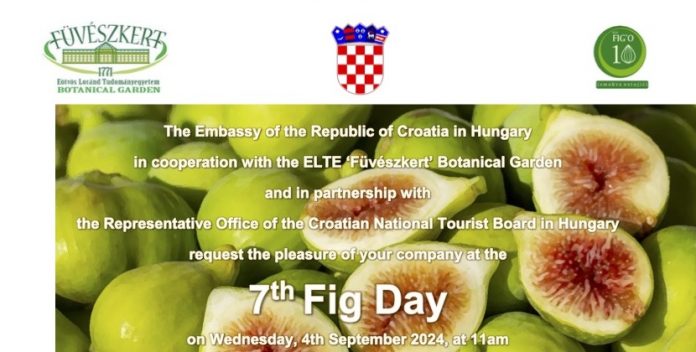A Fruit of History, Culture, Botanical Wonder and Culinary Delight
Edited by Anna Popper

Fig, a Biblical and Mythological Fruit
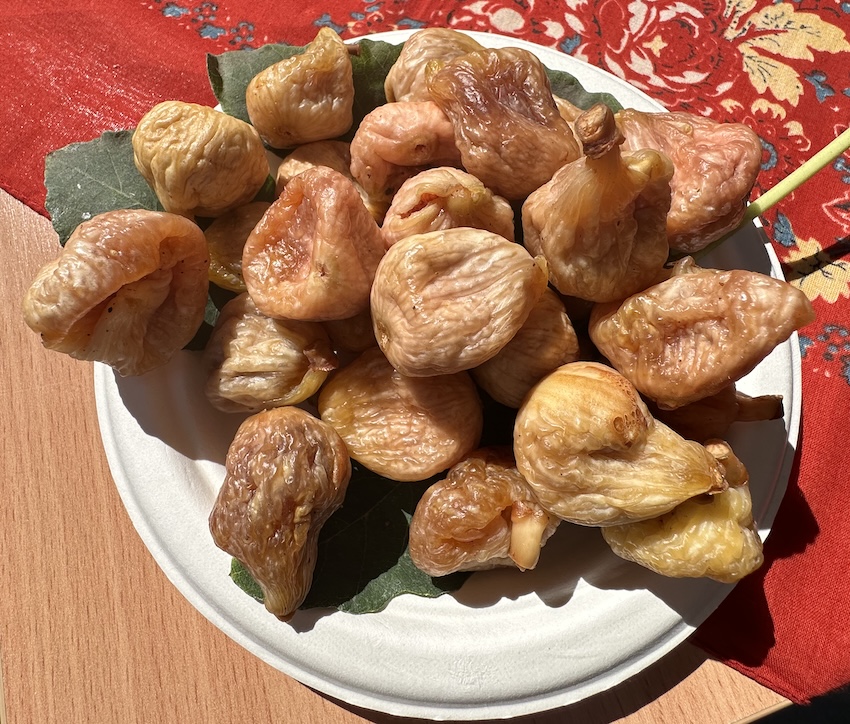
Figs are among the oldest known cultivated fruits, with a history dating back nearly 10,000 years. They have been a symbol of abundance, fertility and prosperity in various cultures and feature prominently in ancient texts such as the Bible, the Quran and Greek mythology.
In the Bible, Adam and Eve covered themselves with fig leaves after tasting the forbidden fruit – a gesture that has been immortalized as a symbol of modesty and humanity’s fall from grace. The fig tree also holds significance in Greek mythology and many Mediterranean traditions, where it has long been associated with wisdom and sustenance.
In Dalmatia, a coastal region of Croatia, fig trees have grown since ancient times, even adorning city streets. Figs thrive in this climate, contributing to the region’s culinary and cultural heritage.
Fig Day – a Special Celebration
The 7th Fig Day was celebrated in September 2024 at the ELTE University Botanical Garden (Füvészkert) in Budapest. Established over 250 years ago, this historic garden spans a picturesque three hectares and boasts more than 7,000 plant species, offering a pleasant green refuge in the bustling Pest side of the capital.

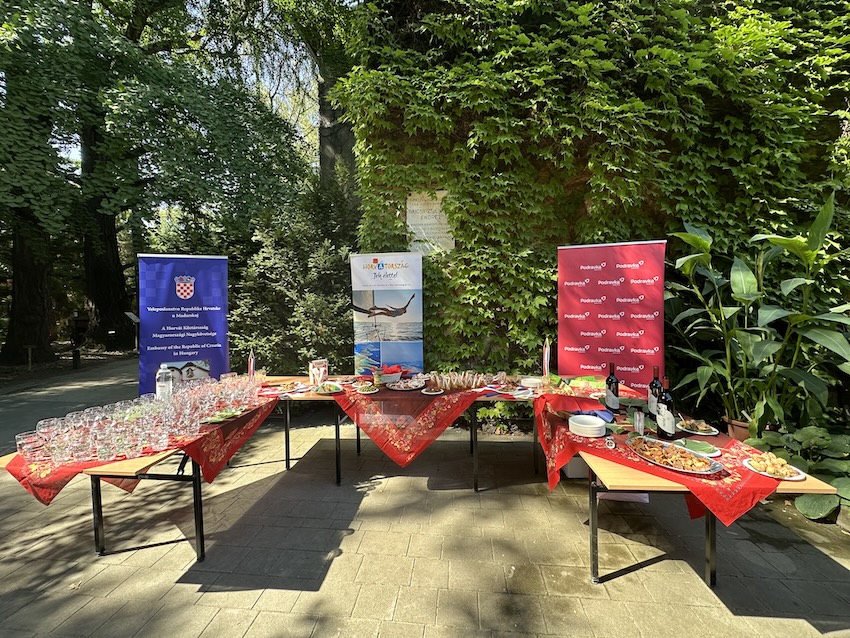
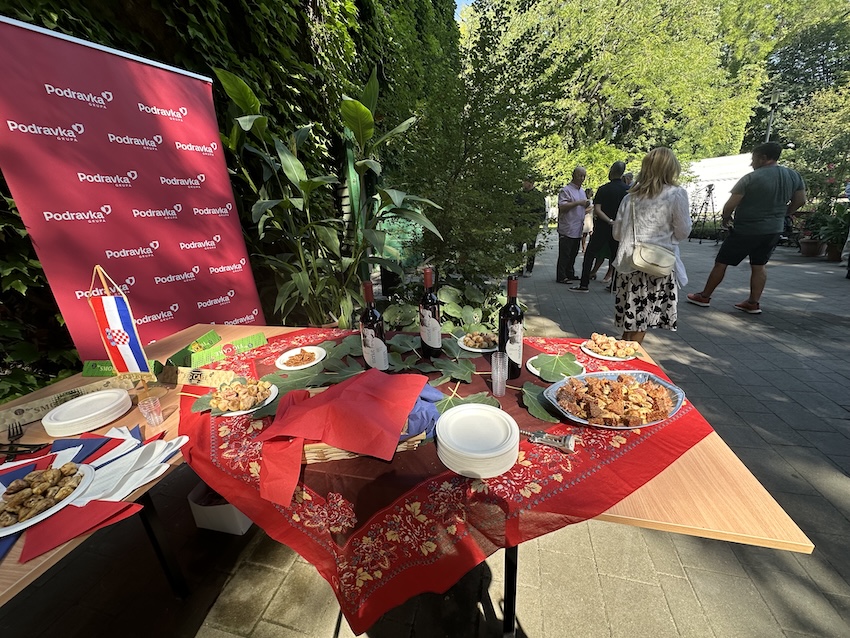
This annual event, organised in collaboration with the Embassy of the Republic of Croatia in Hungary and the Croatian National Tourist Board, highlights the deep-rooted connection between figs and cultural traditions.


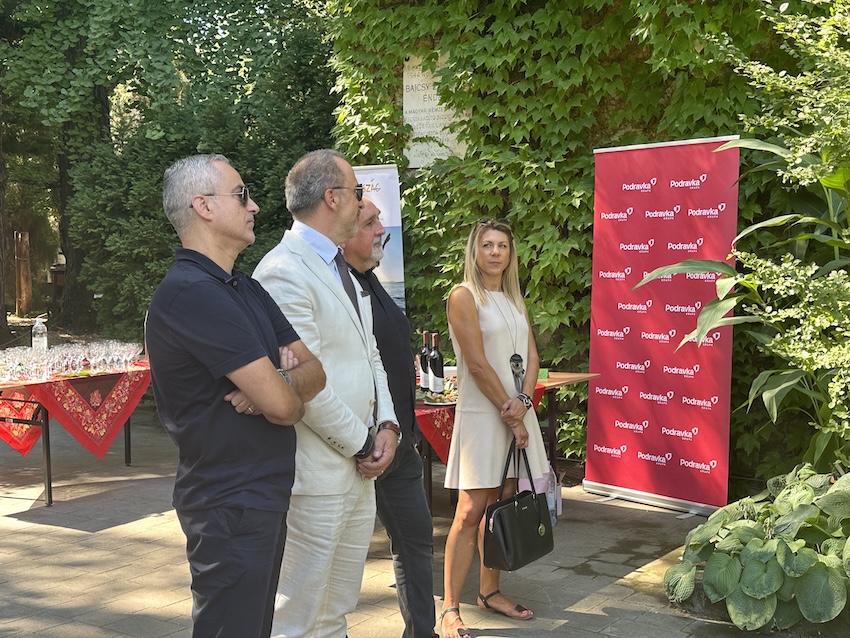


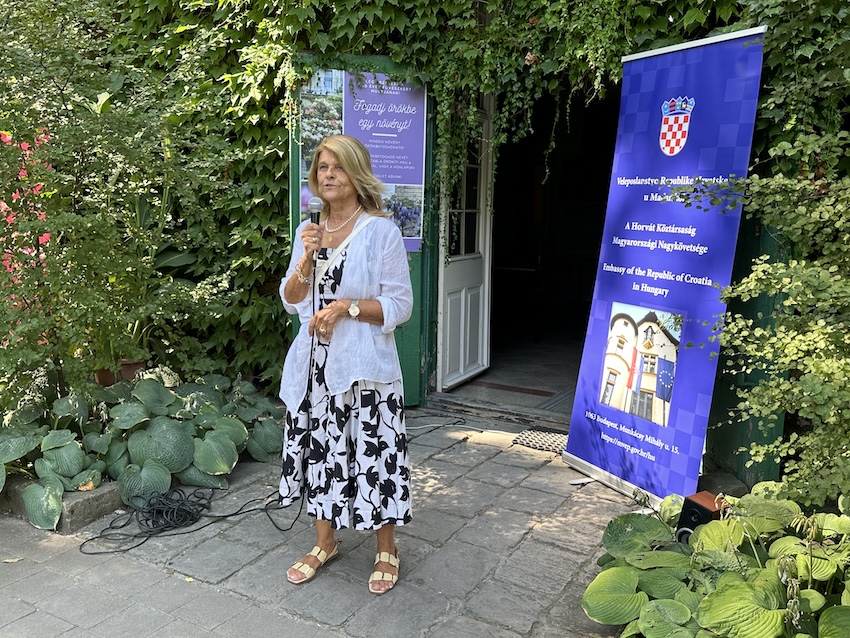
The event began with an introduction by Mrs. Marina Sikora, First Secretary of the Embassy of Croatia. She extended a cordial welcome to the audience and shared the inspiring story of the Tomo Ostojić family business, renowned for upholding Croatia’s rich fig-growing tradition. Representing the esteemed OPG OSTOJIĆ, the family has been producing exceptional fig products for over a century. Looking ahead, the Ostojić family remains committed to preserving the highest quality standards while innovating new products and expanding their production capacities.
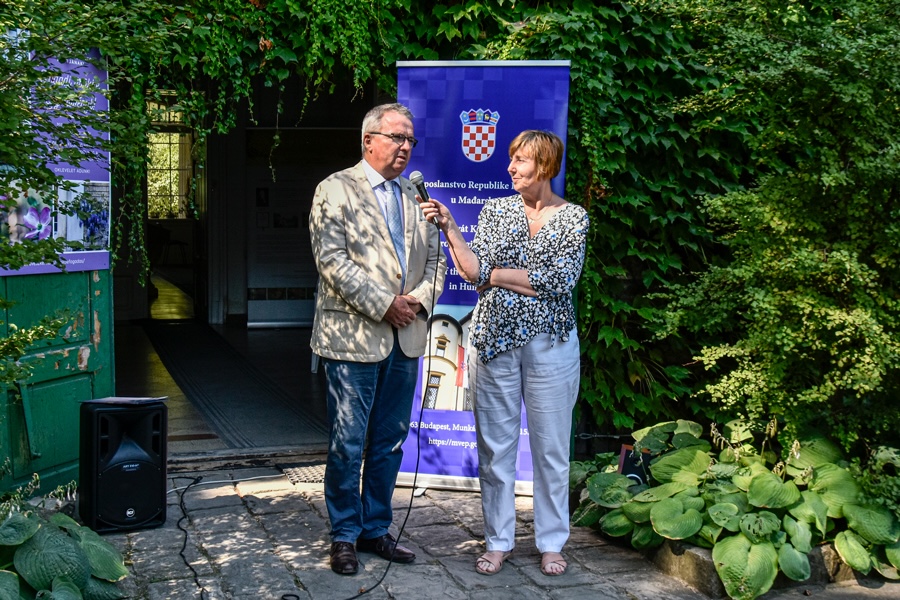
Then, Dr. László Orlóci, Director of the Botanical Garden greeted the attendees, expressing his pride in hosting the event for the seventh time. This year’s Fig Day coincided with the beginning of the academic year. The celebration also provides an opportunity to highlight the growing importance of fig cultivation in Hungary. Dr. Orlóci noted that due to climate change, figs are increasingly becoming a viable crop in Hungary, opening avenues for knowledge exchange between Hungary and Croatia.
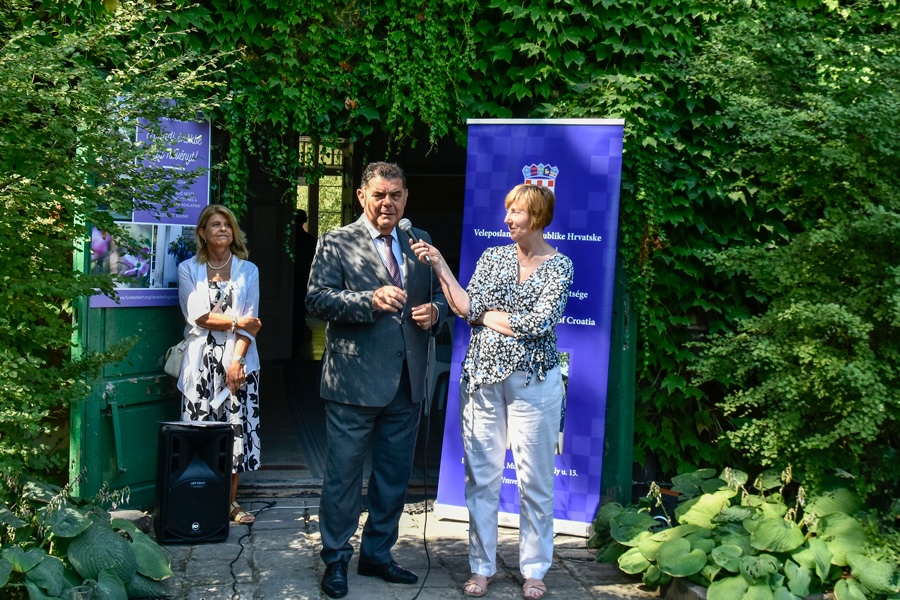
H.E. Dr. Mladen Andrlić, Ambassador of the Republic of Croatia to Hungary, also addressed the gathering, underscoring the significance of Fig Day and celebrating this cherished fruit that holds a special place in Croatian culture. He also emphasized the deep cultural and agricultural bonds between the two neighbouring nations.
The event featured a showcase of fig-based products, jams and beverages from the Tomo Ostojić family farm in Peračko Blato, Dubrovnik-Neretva County. Guests enjoyed these delicacies along with Croatian ham (pršut) from Podravka and wines that highlighted the region’s rich culinary heritage.
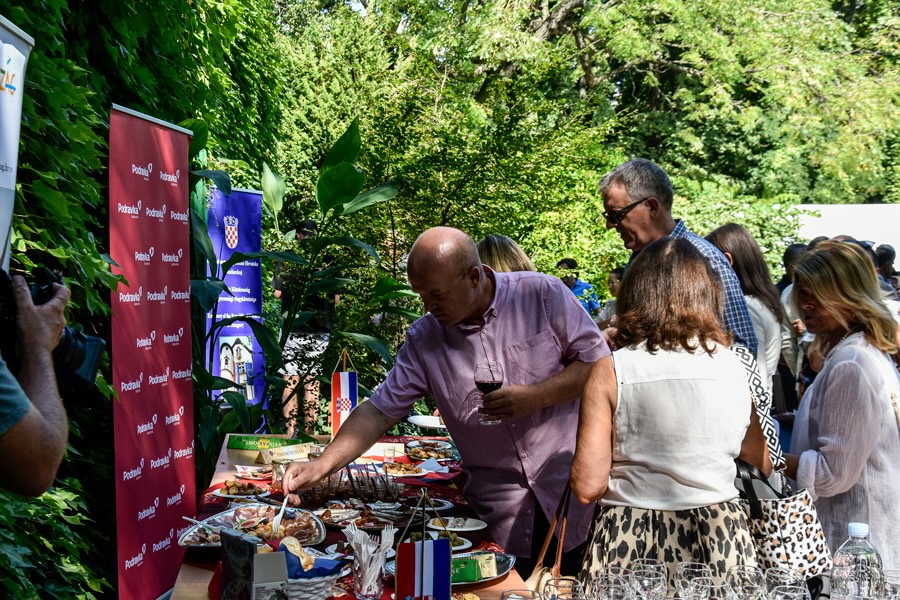
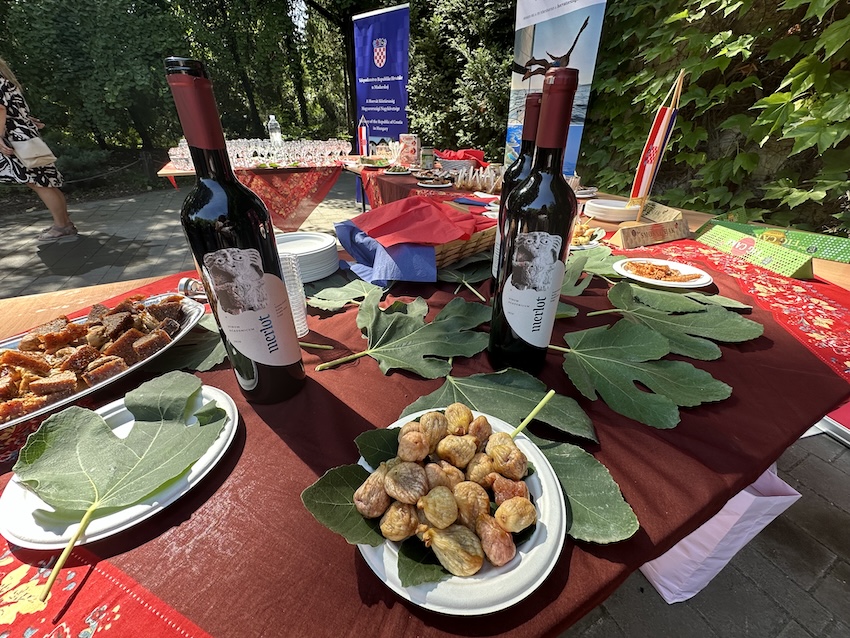

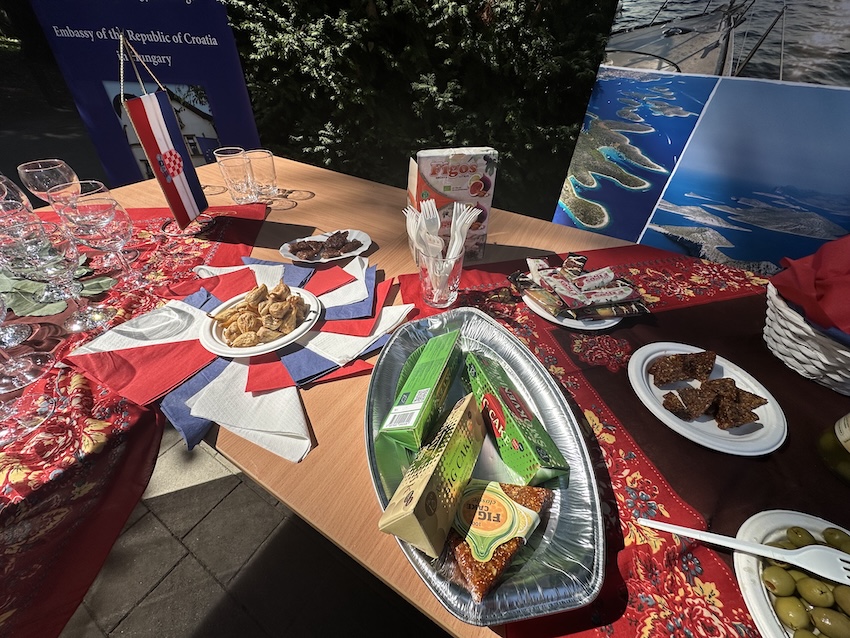
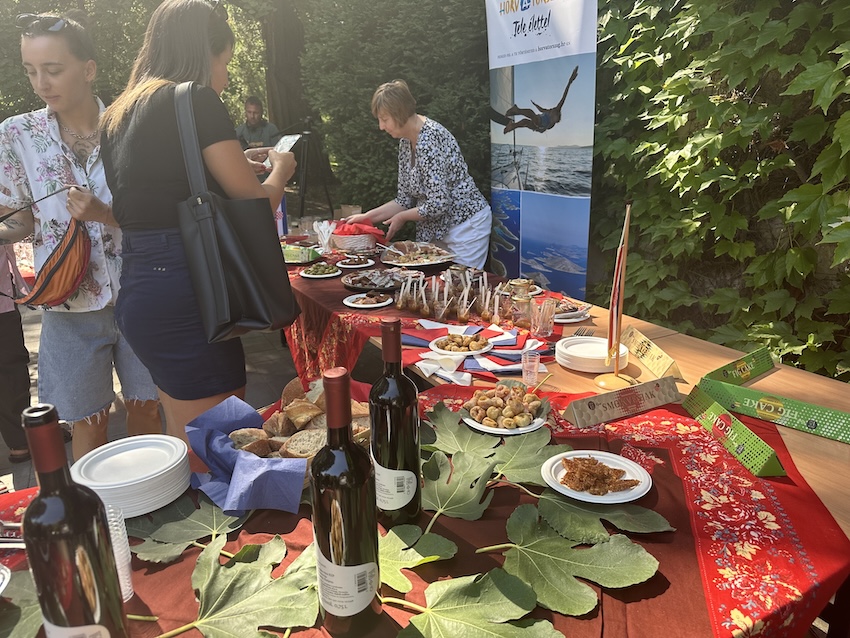

Adding a musical touch, a student from the Budapest Croatian Educational Institute performed the song Tvoja Zemlja (Your Land) from a beloved Croatian musical.
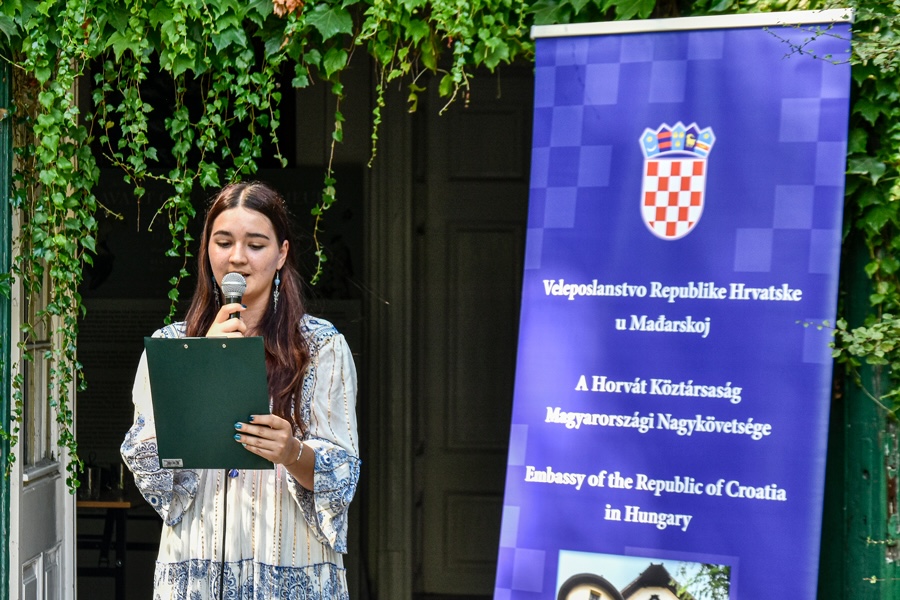
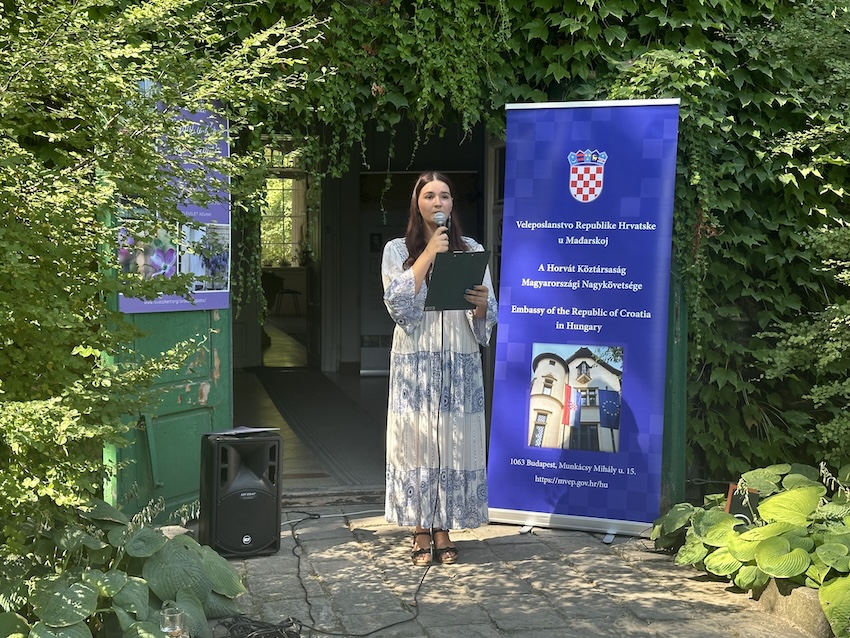
Figs – A Botanical Marvel
Figs are remarkable not only for their cultural significance, but also for their unique botanical characteristics. The fig tree belongs to the mulberry family and bears a delicious sweet fruit that is far from being an ordinary fruit. Technically, it is not even a fruit! Unlike traditional fruit trees such as almonds or cherries, figs do not produce visible blossoms. Strictly speaking, figs are inverted flowers. What we commonly recognize as a fig is actually a syconium – a fleshy structure that houses numerous tiny flowers within. These flowers bloom internally, out of sight, and their pollination is equally intriguing. Many fig species depend on fig wasps in a highly specialized mutualistic relationship. Female wasps lay their eggs inside the fig while pollinating its flowers. This intricate partnership ensures the survival of both species.
Some varieties, such as the common fig (Ficus carica), are self-pollinating and do not rely on wasps. This adaptability has made figs a staple crop in many regions, especially in Mediterranean climates.
Nutritional and Culinary Value
Figs are nutritional powerhouses, rich in fibre, vitamins, and essential minerals like calcium, potassium, and magnesium. They support digestive health, bone strength, and cardiovascular wellness.
Culinary traditions around the world incorporate figs, both fresh and dried. Figs feature in desserts, savoury dishes, and beverages such as fig wine. In Mediterranean cuisine, they are often paired with cheese, nuts, and cured meats, showcasing their versatility. Rooted deep in history and celebrated for their unique botanical traits, figs continue to hold a special place across cultures.
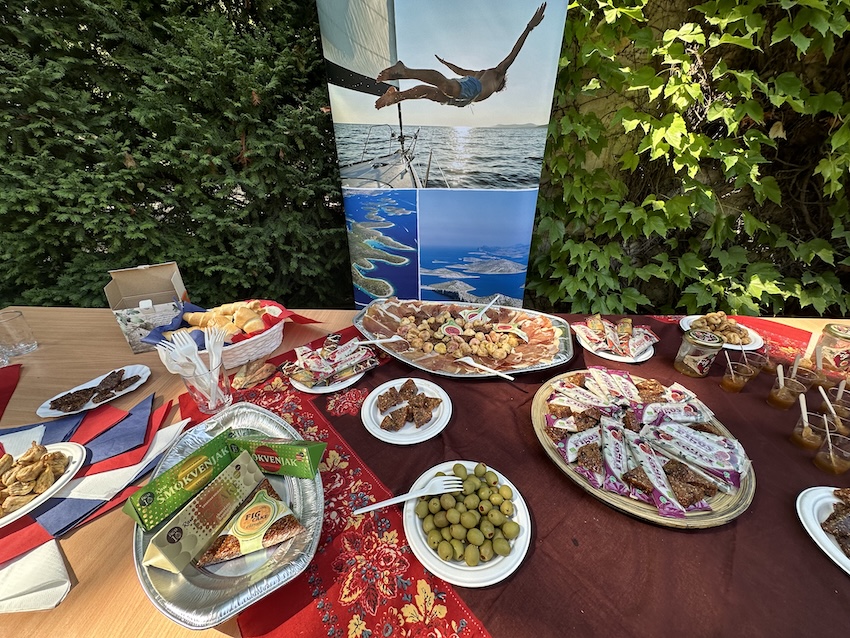

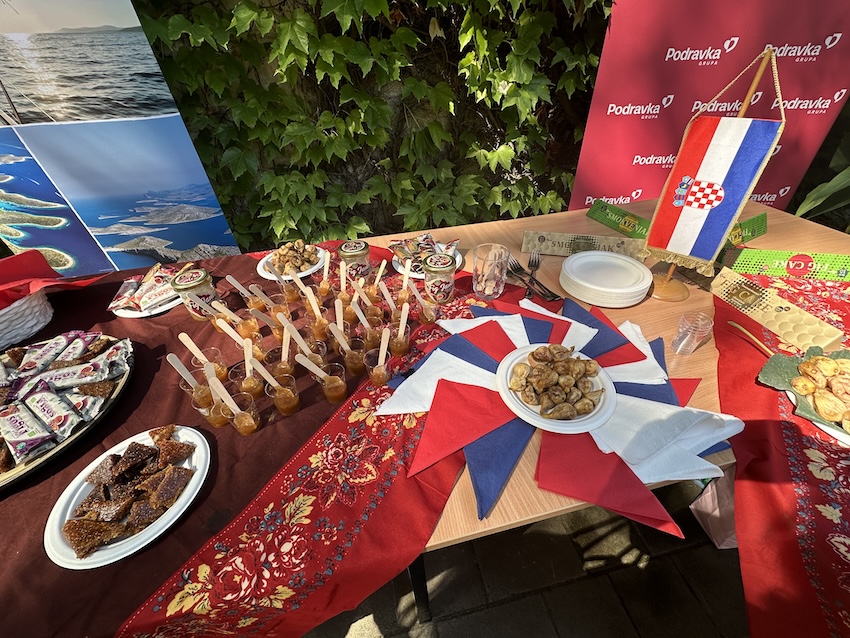
Source: Embassy of the Republic of Croatia in Budapest
Photos by the Embassy of the Republic of Croatia in Budapest, ELTE Botanical Garden, and DPA





